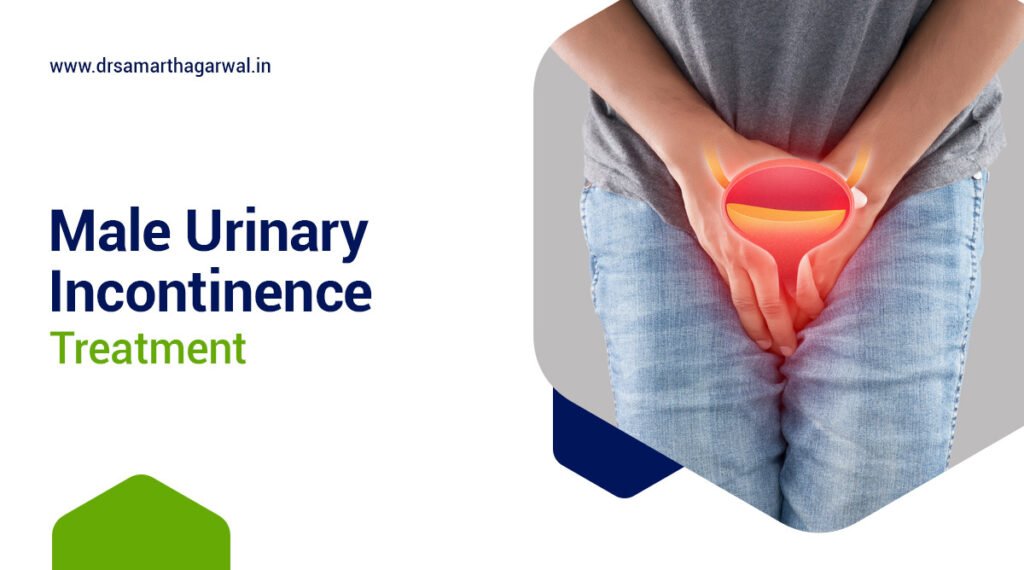Urinary retention and obstructive uropathy are two conditions that can significantly impact urinary health and overall well-being. Understanding the distinctions between them is crucial for effective diagnosis and treatment.
This article explores what urinary retention is, its various types and causes, and contrasts it with obstructive uropathy, including its symptoms and causes.
It discusses their diagnoses, treatment options, and the potential for one to lead to the other, equipping you with essential knowledge to navigate these medical challenges.
Understanding Urinary Retention and Obstructive Uropathy
Understanding urinary retention and obstructive uropathy is crucial for recognizing their underlying causes, symptoms, and potential complications, particularly as they relate to urinary tract obstruction. These conditions can lead to severe outcomes such as acute renal failure and chronic renal failure, affecting kidney function and overall health.
Urologists often diagnose and manage these ailments to prevent debilitating complications, including recurrent urinary tract infections. By comprehending their differences and implications, patients can seek timely medical intervention, thereby preserving their urinary tract health and enhancing their quality of life.
What are the Differences between Urinary Retention and Obstructive Uropathy?
Urinary retention is the inability to completely empty the bladder, while obstructive uropathy is a blockage in the urinary tract that prevents urine from flowing out of the body.
Urinary retention primarily refers to the inability to empty the bladder fully, while obstructive uropathy is characterized by a blockage in the urinary tract that affects urine flow. Understanding these distinctions is essential for proper diagnosis and treatment, as both conditions can arise from urinary tract obstruction. While urinary retention can present with specific symptoms and require particular interventions, obstructive uropathy may lead to more severe complications, necessitating comprehensive management strategies from urologists.
The following table outlines the key differences between urinary retention and obstructive uropathy, highlighting their definitions, causes, symptoms, diagnosis, treatment options, and potential complications. This comparison aims to enhance your understanding of these two conditions and their implications for urinary health.
| Aspect | Urinary Retention | Obstructive Uropathy |
| Definition | Inability to fully empty the bladder, leading to discomfort and complications. | Impaired urine flow due to an obstruction in the urinary tract, potentially harming kidneys. |
| Types | Acute (sudden, painful) and Chronic (gradual, may go unnoticed). | N/A |
| Causes | Obstructive (e.g., BPH, urinary tract obstructions) and non-obstructive (e.g., neurological issues, medications). | Ureteral stricture, renal calculi, BPH, pelvic organ prolapse. |
| Symptoms | Acute: severe abdominal pain, inability to urinate. Chronic: frequent urination, nocturia, incomplete emptying. | Pain in lower abdomen, urinary frequency, urgency, potential hydronephrosis. |
| Diagnosis | Urological evaluation to determine underlying causes. | Imaging studies and clinical evaluation to identify obstruction. |
| Treatment | Catheterization, medications, lifestyle changes, or surgery. | Addressing the obstruction through various interventions, depending on the cause. |
| Complications | Can lead to impaired bladder function, urinary infections, kidney damage. | Can result in hydronephrosis, chronic renal dysfunction, and other severe outcomes. |
| Role of Urologists | Diagnose and manage urinary retention to restore normal urine flow. | Detect and treat obstructions to maintain kidney function and urinary health. |
How are they Diagnosed?
Diagnosing urinary retention and obstructive uropathy typically involves a comprehensive approach that includes a physical examination, lab studies, and imaging studies to assess urinary tract health.
These diagnostic processes are essential because they allow urologists to evaluate urinary flow and identify any obstructions that might be present. A thorough physical examination may reveal notable signs such as bladder distension, while:
- laboratory tests
- urinalysis
- blood tests
help assess kidney function and detect infections. Imaging techniques like ultrasound or CT scans provide vital insights into the anatomical structure of the urinary tract, enabling specialists to visualize blockages or abnormalities. By integrating these methodologies, healthcare professionals can pinpoint the root causes of conditions such as urinary retention and obstructive uropathy, ultimately guiding effective treatment strategies that aim to restore proper urinary function and improve patient outcomes.
What are the Treatment Options for Urinary Retention?
Treatment options for urinary retention can vary widely, ranging from the use of a transurethral bladder catheter to relieve acute symptoms to various medical therapies aimed at addressing underlying causes. Urologists assess each patient’s individual needs to determine the most effective intervention, which may also include lifestyle modifications and addressing contributing factors such as urinary tract obstruction. Timely management is crucial to alleviate discomfort and prevent complications.
There are several approaches to manage urinary retention effectively. Immediate interventions often include:
- Catheterization: This is a common method utilized to quickly relieve symptoms, especially in acute cases.
- Medication: Depending on the cause, medications such as alpha-blockers may be prescribed to help relax the bladder neck and facilitate easier urination.
- Surgical options: In cases involving significant anatomical issues, surgical interventions may be necessary to correct obstructions.
Long-term management strategies can encompass:
- Pelvic floor exercises to strengthen bladder control.
- Lifestyle adjustments, including dietary changes.
- Regular follow-ups with healthcare providers to monitor urinary health.
Ultimately, the role of urologists is pivotal, as they customize treatment plans based on each patient’s unique situation, ensuring the best possible outcomes and quality of life.
What are the Treatment Options for Obstructive Uropathy?
Treatment options for obstructive uropathy are primarily focused on removing the obstruction and restoring normal urine flow, which may involve surgical interventions or medical therapies guided by imaging studies. Urologists play a vital role in determining the appropriate course of action based on the severity of the obstruction and the impact on renal function. Early and effective treatment is essential to prevent complications such as renal dysfunction and preserve kidney health.
To effectively address obstructive uropathy, both surgical and non-surgical interventions can be considered. Non-surgical options might include:
- Medication to manage symptoms and reduce inflammation.
- Catheterization to alleviate immediate urinary retention.
- Urethral dilation or stenting, which can aid in opening any narrowed pathways.
When non-invasive methods are insufficient, surgical interventions may become necessary. Common surgical procedures include:
- Pyeloplasty to correct urinary tract blockages.
- Nephroureterectomy for removing obstructed kidney segments or entire kidneys.
- Reconstructive surgery focused on urinary tract restoration.
Guidance from comprehensive imaging studies, such as ultrasounds or CT scans, is crucial for identifying the obstruction’s exact location and extent. This data enables urologists to tailor the treatment plan effectively, ensuring optimal outcomes for the patient.
Can Urinary Retention Lead to Obstructive Uropathy?
Yes, urinary retention can lead to obstructive uropathy if the underlying causes of retention result in urinary tract obstruction, creating a feedback loop of complications that may ultimately impair kidney function. Urologists often emphasize the need for prompt treatment of urinary retention to prevent progression to obstructive uropathy and associated risks such as renal dysfunction and hydronephrosis. Understanding this relationship is vital for both patients and healthcare providers.
When urinary retention persists, it can provoke a series of detrimental effects on the urinary system. An obstruction in the urinary tract forces the bladder to work harder, which can lead to increased pressure within the bladder and subsequently back up into the kidneys. This creates a situation where not only does the risk of obstructive uropathy increase, but the long-term effects could include chronic kidney disease and even kidney failure if left untreated.
Healthcare professionals should be vigilant about the signs of urinary retention, which can range from difficulty urinating to the complete inability to void. Early identification and intervention are essential to mitigate further complications:
- Regular monitoring of kidney function
- Assessment of bladder pressure
- Implementing appropriate treatment strategies
By recognizing the interconnectedness of these conditions, a more holistic approach can be taken to preserve kidney health and improve patient outcomes.
Know Urinary retention and Obstructive uropathy in detail below –
What is Urinary Retention?
Urinary retention is a urological condition characterized by the inability to fully empty the bladder, resulting in discomfort and potential complications. This condition can occur due to various factors, including obstructive uropathy, which may lead to urinary tract obstruction, affecting normal urine flow. Urologists frequently encounter patients presenting with urinary retention symptoms, prompting the need for thorough evaluation and diagnosis to determine underlying causes and appropriate management strategies.
In essence, the inability to properly void can significantly impair one’s bladder health, creating a range of issues that can escalate if left unaddressed. This condition is categorized into two primary types:
- Acute urinary retention: A sudden and painful inability to urinate, often requiring immediate medical intervention.
- Chronic urinary retention: A gradual onset that may not present immediate discomfort but can lead to long-term bladder damage.
The implications for bladder health are critical, as persistent retention can cause impaired bladder function, urinary infections, and potentially even kidney damage.
Urologists play a vital role in addressing this condition by utilizing advanced diagnostic tools, offering treatment options such as catheterization, medications, or surgical interventions when necessary. Their expertise is essential for restoring normal urine flow and ensuring overall urinary tract health.
What are the Types of Urinary Retention?
There are two main types of urinary retention: acute urinary retention and chronic urinary retention, each presenting distinct challenges and requiring different management approaches. Acute urinary retention is a sudden inability to urinate, often requiring immediate medical attention due to its potential to lead to severe complications, while chronic urinary retention develops gradually and may go unnoticed for a longer period. Understanding these types is crucial for urologists to provide appropriate interventions and improve patient outcomes.
When differentiating between these two forms, it is essential to recognize that acute urinary retention typically manifests with intense discomfort, a palpable bladder, and may occur in situations where the individual might be unable to void at all. In contrast, chronic urinary retention is characterized by a more gradual onset, where individuals might notice frequent urination, difficulty starting the urine stream, or a sensation of incomplete emptying.
- Symptoms of Acute Urinary Retention: Severe abdominal pain, inability to urinate, and potential shock.
- Symptoms of Chronic Urinary Retention: Urination in small amounts, night-time urination (nocturia), and persistent urgency.
Both conditions can stem from a variety of urological conditions, such as benign prostatic hyperplasia, urinary tract infections, or spinal cord injuries. Treatment options differ significantly; acute urinary retention often necessitates catheterization or surgical interventions, while chronic cases may be managed through medications, lifestyle changes, and sometimes surgery, depending on the underlying causes.
What Causes Urinary Retention?
Urinary retention can arise from various causes, including urinary tract obstruction, benign prostatic hyperplasia (BPH), or conditions such as ureteral stricture and pelvic organ prolapse, which impair normal urine flow. Hydronephrosis, a condition characterized by fluid overload in the kidneys, can lead to significant urinary retention complications. Identifying these underlying causes is essential for urologists to effectively manage urinary retention and prevent further renal dysfunction.
The factors contributing to urinary retention can be classified into two main categories: obstructive and non-obstructive causes.
- Obstructive factors commonly include benign prostatic hyperplasia (BPH), where an enlarged prostate compresses the urethra, impeding urine flow.
- Urinary tract obstructions such as kidney stones or tumors can physically block urine passage.
- Conditions like hydronephrosis occur when urinary flow is obstructed, resulting in kidney swelling.
On the other hand, non-obstructive factors involve neurological issues, medications that affect bladder function, or infections that may disrupt normal urinary patterns.
A thorough urological evaluation is crucial for accurately diagnosing these conditions, allowing for tailored treatments that address both the symptoms and the underlying causes of urinary retention.
What is Obstructive Uropathy?
Obstructive uropathy is a medical condition where an obstruction in the urinary tract leads to impaired urine flow, which can result in hydronephrosis and potential kidney function deterioration. This condition can arise from various causes, including structural abnormalities, tumors, or urinary tract stones, and is a significant concern for urologists. Effective management is crucial to prevent renal dysfunction and maintain overall urinary health, emphasizing the need for early diagnosis and treatment.
Understanding the mechanisms behind obstructive uropathy is vital for safeguarding kidney function and preventing long-term complications. The obstruction can occur at any point in the urinary tract, from the kidneys to the bladder, and its impact can vary significantly. Patients may experience symptoms such as:
- Pain or discomfort in the abdomen or back
- Urinary frequency and urgency
- Signs of infection, such as fever
Without timely intervention, the resulting hydronephrosis can lead to serious conditions like chronic renal dysfunction, which underscores the importance of urologists in detecting and addressing these blockages promptly.
Urologists utilize a combination of imaging studies and clinical evaluation to diagnose the obstruction and determine the most effective treatment strategies.
What are the Causes of Obstructive Uropathy?
The causes of obstructive uropathy are diverse and include conditions such as ureteral stricture, renal calculi, benign prostatic hyperplasia (BPH), and pelvic organ prolapse, each contributing to urinary tract obstruction. These obstructions can lead to increased pressure in the urinary tract, resulting in potential kidney damage and renal dysfunction. Understanding these causes is essential for urologists to implement effective treatment strategies and improve patient outcomes.
In examining the various causes, it is crucial to recognize how ureteral strictures can arise from previous surgeries, trauma, or inflammatory diseases, leading to significant narrowing of the ureter.
- Renal calculi, commonly known as kidney stones, often form due to mineral imbalances and can obstruct urine flow when they travel down the urinary tract.
- Benign prostatic hyperplasia (BPH) results in an enlarged prostate that constricts the urethra, impeding the passage of urine.
- Additionally, pelvic organ prolapse can displace surrounding structures, contributing to urinary retention and discomfort.
These factors illustrate the importance of comprehensive assessments for patients experiencing urinary issues, as timely diagnosis and intervention can substantially mitigate complications and promote greater urinary health.
What are the Symptoms of Obstructive Uropathy?
Symptoms of obstructive uropathy often include pain in the lower abdomen, urinary frequency, urgency, and the potential for hydronephrosis, which can lead to further complications such as renal dysfunction. Recognizing these symptoms is essential for timely intervention, as prolonged urinary tract obstruction can exacerbate these issues. Urologists play a crucial role in diagnosing these symptoms and determining appropriate treatment to restore normal urinary function.
Detecting the broad spectrum of symptoms associated with obstructive uropathy is vital, as these can vary from mild to severe. Patients may experience:
- Changes in urine output, which can indicate obstruction severity.
- Flank or back pain, a common sign of kidney involvement.
- Nausea and vomiting, often linked with increased pressure in the urinary tract.
- Fever and chills, suggesting possible infection following prolonged obstruction.
Understanding the connection between these symptoms and urinary tract obstruction is critical. Physicians, particularly urologists, are trained to assess these manifestations, often employing imaging techniques like ultrasounds or CT scans to establish the diagnosis and guide treatment options effectively.
Early recognition enables the implementation of timely interventions, potentially preventing further complications and preserving kidney function.
When to See a Urologist?
It is crucial for individuals experiencing symptoms of urinary retention or obstructive uropathy to consult a urologist promptly, particularly when symptoms such as difficulty urinating, abdominal pain, or recurrent urinary tract infections arise.
These symptoms may indicate underlying urinary tract obstruction or other serious conditions that require professional evaluation and management. Early consultation with a urologist can lead to timely diagnosis, effective treatment plans, and improved health outcomes.
Neglecting such warning signs can result in severe consequences, including permanent kidney damage or urinary incontinence, highlighting the significance of prioritizing health.
- Difficulty urinating: Experiencing a weak stream or feeling unable to fully empty the bladder.
- Abdominal pain: Persistent discomfort in the lower abdomen that does not subside.
- Frequent urinary tract infections: Recurring infections that may indicate an obstruction.
- Blood in urine: This alarming symptom warrants immediate medical attention.
- Inability to urinate: A complete inability to pass urine is a medical emergency.
By seeking help promptly, individuals can mitigate the risk of complications and enhance their overall quality of life.
Preventing Urinary Retention and Obstructive Uropathy
Preventing urinary retention and obstructive uropathy involves adopting proactive strategies that promote urinary tract health and reduce the risk of urinary tract obstruction. Key preventive measures include maintaining adequate hydration, practicing healthy lifestyle modifications, and regularly monitoring for symptoms that may indicate underlying issues. By taking these steps, individuals can significantly reduce their chances of developing these conditions and support overall kidney function.
Frequently Asked Questions
What are the common causes of urinary retention?
Urinary retention can be caused by a variety of factors, including an enlarged prostate, nerve damage, medication side effects, and urinary tract infections.
How is obstructive uropathy diagnosed?
Obstructive uropathy is typically diagnosed through imaging tests such as ultrasound, CT scan, or MRI. A urologist may also perform a cystoscopy to directly visualize the urinary tract.
What are the symptoms of urinary retention?
The most common symptoms of urinary retention include difficulty starting urination, weak urine stream, frequent urination, and the feeling of not completely emptying the bladder.
Can urinary retention and obstructive uropathy be treated?
Yes, both conditions can be treated. Treatment options for urinary retention may include medication, catheterization, or surgery. Obstructive uropathy may require surgery to remove the blockage or a stent to keep the urinary tract open.
Is urinary retention a serious condition?
Untreated urinary retention can lead to complications such as urinary tract infections, bladder or kidney damage, and even kidney failure. It is important to seek medical treatment if you are experiencing symptoms of urinary retention.

Contact Dr. Samarth Agarwal if you have any questions or concerns about your Urinary health!






